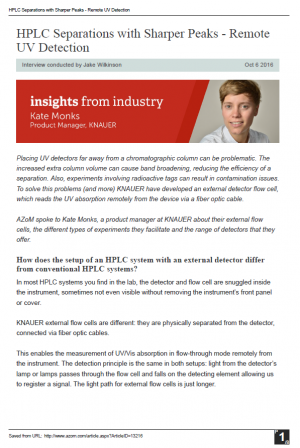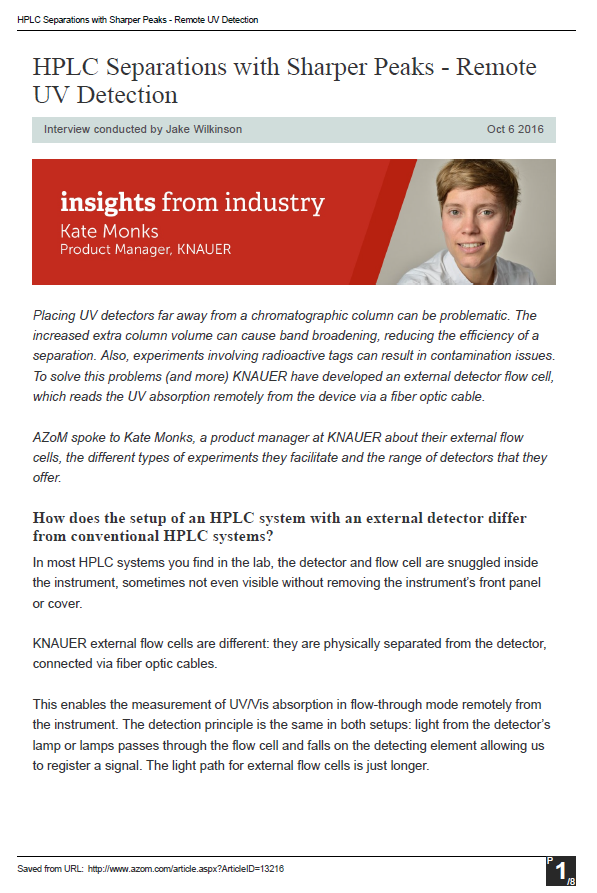HPLC Separations with Sharper Peaks - Remote UV Detection

Placing UV detectors far away from a chromatographic column can be problematic. The increased extra column volume can cause band broadening, reducing the efficiency of a separation. Also, experiments involving radioactive tags can result in contamination issues. To solve this problems (and more) KNAUER have developed an external detector flow cell, which reads the UV absorption remotely from the device via a fiber optic cable. AZoM spoke to Kate Monks, a product manager at KNAUER about their external flow cells, the different types of experiments they facilitate and the range of detectors that they offer.
How does the setup of an HPLC system with an external detector differ from conventional HPLC systems?
In most HPLC systems you find in the lab, the detector and flow cell are snuggled inside the instrument, sometimes not even visible without removing the instrument’s front panel or cover. KNAUER external flow cells are different: they are physically separated from the detector, connected via fiber optic cables. This enables the measurement of UV/Vis absorption in flowthrough mode remotely from the instrument. The detection principle is the same in both setups: light from the detector’s lamp or lamps passes through the flow cell and falls on the detecting element allowing us to register a signal. The light path for external flow cells is just longer.
Does remote detection result in better separations? If so, why?
That depends on the application. For instance lowflow separations (nano or micro HPLC) are greatly dependent on extra column volumes. This is the volume between the points of injection and detection, excluding the stationary phase part of the column. Through fiber optic technology we can place the micro or nano flow cell as close as possible to the HPLC column outlet. This way we can minimize the extra column volume and reduce undesirable peak broadening. This can make or break a separation.
Does the use of an external detector allow for any experiments to be undertaken which, using a conventional HPLC system, would be difficult or not possible?
This technology really comes into its own in hazardous environments with radioactive, explosive, toxic or high temperature applications. For instance many of our customers working with radioactive substances place the KNAUER remote cell inside their dangerous hot cell leaving their detector safely outside. This prevents the detectors getting into contact with contamination, and means you don’t become the Hulk when you carry out maintenance. Another interesting application for this technology is high flow rate LC, where thick capillaries (> 1/8”) are used for plumbing the system. Anyone who has plumbed one of these systems will know that bending tubing as thick as your little finger is no easy task. Here, the fiber optic cables can be used to take the flow cell to the flow rather than redirecting the flow through the detector flow cell.
